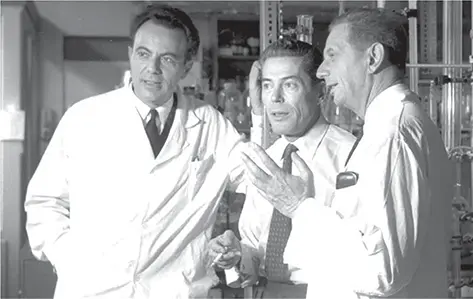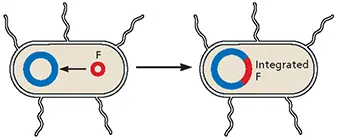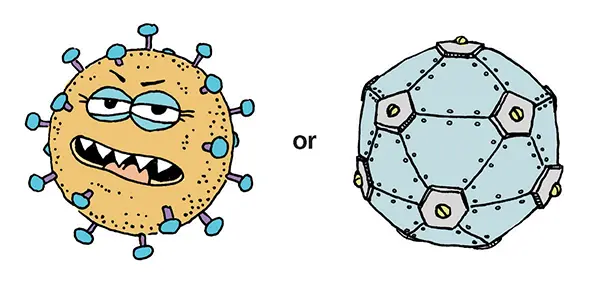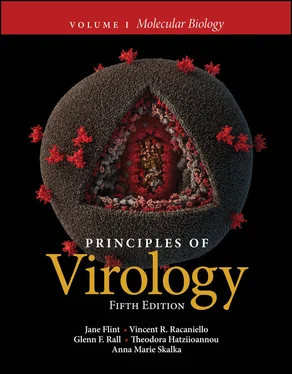Jane Flint - Principles of Virology, Volume 1
Здесь есть возможность читать онлайн «Jane Flint - Principles of Virology, Volume 1» — ознакомительный отрывок электронной книги совершенно бесплатно, а после прочтения отрывка купить полную версию. В некоторых случаях можно слушать аудио, скачать через торрент в формате fb2 и присутствует краткое содержание. Жанр: unrecognised, на английском языке. Описание произведения, (предисловие) а так же отзывы посетителей доступны на портале библиотеки ЛибКат.
- Название:Principles of Virology, Volume 1
- Автор:
- Жанр:
- Год:неизвестен
- ISBN:нет данных
- Рейтинг книги:5 / 5. Голосов: 1
-
Избранное:Добавить в избранное
- Отзывы:
-
Ваша оценка:
- 100
- 1
- 2
- 3
- 4
- 5
Principles of Virology, Volume 1: краткое содержание, описание и аннотация
Предлагаем к чтению аннотацию, описание, краткое содержание или предисловие (зависит от того, что написал сам автор книги «Principles of Virology, Volume 1»). Если вы не нашли необходимую информацию о книге — напишите в комментариях, мы постараемся отыскать её.
Volume I: Molecular Biology
Volume II: Pathogenesis and Control
Principles of Virology, Fifth Edition
Principles of Virology, Volume 1 — читать онлайн ознакомительный отрывок
Ниже представлен текст книги, разбитый по страницам. Система сохранения места последней прочитанной страницы, позволяет с удобством читать онлайн бесплатно книгу «Principles of Virology, Volume 1», без необходимости каждый раз заново искать на чём Вы остановились. Поставьте закладку, и сможете в любой момент перейти на страницу, на которой закончили чтение.
Интервал:
Закладка:
Our current understanding of the molecular basis of viral parasitism, the focus of this volume, is based almost entirely on analyses of one-step growth cycles in cultured cells. Such studies established that viruses depend absolutely on the biosynthetic machinery of their host cells for synthesis of the components from which progeny viral particles are built. In contrast to cells, viruses are not reproduced by growth and division. Rather, the infecting genome contains the information necessary to redirect cellular systems to the production of many copies of all the components needed for the de novo assembly of new virus particles. It is remarkable, however, that while viruses lack the complex energy-generating and biosynthetic systems necessary for independent existence ( Box 1.8), they are notthe simplest biologically active agents: viroids, which are infectious agents of a variety of economically important plants, comprise a single small molecule of noncoding RNA, whereas agents called prions, which cause neurological disease in humans and animals, are thought to be aggregates of single protein molecules (Volume II, Chapter 13).
BOX 1.6
BACKGROUND
Properties of lysogeny shared with animal viruses
Lytic versus Lysogenic Response to Infection
Some bacterial viruses can enter into either destructive (lytic) or relatively benign (lysogenic) relationships with their host cells. Such bacteriophages were called temperate. In a lysogenic bacterial cell, viral genetic information persists but viral gene expression is repressed. Such cells are called lysogens, and the quiescent viral genome, a prophage. By analogy with the prophage, an integrated DNA copy of a retroviral genome in an animal genome is termed a provirus.
Propagation as a Prophage
For some bacteriophages like lambda and Mu (Mu stands for “mutator”), prophage DNA is integrated into the host genome of lysogens and passively replicated by the host. Virally encoded enzymes, known as integrase (lambda) and transposase (Mu), mediate the covalent insertion of viral DNA into the chromosome of the host bacterium, establishing it as a prophage. The prophage DNA of other bacteriophages, such as P1, exists as a plasmid, a self-replicating, autonomous chromosome in a lysogen. Both forms of propagation have been identified in certain animal viruses, for example, retroviruses and a lethal herpesvirus.
Insertional Mutagenesis
Bacteriophage Mu inserts its genome into many random locations on the host chromosome, causing numerous mutations by disrupting host DNA sequences. This process is called insertional mutagenesis and is a phenomenon observed with retroviruses.

Pioneers in the study of lysogeny: Nobel laureates François Jacob, Jacques Monod, and André Lwoff, 1965.Courtesy of the U.S. National Library of Medicine.
Gene Repression and Induction
Prophage gene expression in lysogens is turned of by the action of viral proteins called repressors. Expression can be turned on when repressors are inactivated (a process called induction). The discovery that genes can be regulated by such trans- acting proteins, and elucidation of their mechanism, set the stage for later investigation of the control of gene expression with other viruses and their host cells.
Transduction of Host Genes
Bacteriophage genomes can pick up cellular genes and deliver them to new cells (a process known as transduction). For example, occasional mistakes in excision of the lambda prophage from its host chromosome after induction result in production of unusual progeny phages that have lost some of their own DNA but have acquired the bacterial DNA adjacent to the prophage. The acute transforming retroviruses also arise via capture of genes in the vicinity of their integration as proviruses (Volume II, Chapter 6). These cancer-inducing cellular genes are then transduced along with viral genes during subsequent infection.
BOX 1.7
TERMINOLOGY
The episome
In 1958, François Jacob and Elie Wollman realized that lambda prophage and the E. coli F sex factor had many common properties. This remarkable insight led to the definition of the episome.
An episome is an exogenous genetic element that is not necessary for cell survival. Its defining characteristic is the ability to reproduce in two alternative states: while integrated in the host chromosome or autonomously. However, this term is now most commonly applied to genomes that can be maintained in cells by autonomous replication and never integrate, for example, the DNA genomes of certain animal viruses.

BOX 1.8
DISCUSSION
Are viruses living entities? What can/can’t they do?
Viruses can be viewed as microbes that exist in two phases: an inanimate phase, the virion; and a multiplying phase in an infected cell. Some researchers have promoted the idea that viruses are bona fide living entities. According to this notion, inanimate virions may be viewed as “spores” that transform the infected cell into a novel type of organism (termed a virocell), dedicated to the production of new virions. The nature of viruses has long been a topic of intense discussion, stimulated most recently by the discovery of giant viruses such as the mimiviruses and Pandoraviruses, which encode more functions that previously ascribed to viral genomes.
Apart from attributing “life” to viruses, many scientists have succumbed to the temptation of ascribing various actionsand motiveswhen discussing them. While remarkably effective in enlivening a lecture or an article, anthropomorphic characterizations are inaccurate and also quite misleading. Infected cells and hosts respond in many ways after virus infection, but viruses, which are totally at the mercy of their environment, lack the capacity for intentional, goal-directed activity. Therefore, viruses cannot employ, ensure, synthesize, induce, display, destroy, deploy, depend, avoid, retain, evade, exploit, generate, etc.

As virologists can be very passionate about their subject, it is exceedingly difficult to purge such anthropomorphic terms from virology communications. Indeed, hours were spent doing so in the preparation of this textbook, though undoubtedly there remain examples in which actions are attributed to viruses. Should you find them, let us know!
Check out what the contemporary general public feels about this topic at http://www.virology.ws/are-viruses-alive/.
Forterre P. 2016. To be or not to be alive: how recent discoveries challenge the traditional definitions of viruses and life. Stud Hist Philos Biol Biomed Sci 59:100–108.
van Regenmortel MHV. 2016. The metaphor that viruses are living is alive and well, but it is no more than a metaphor. Stud Hist Philos Biol Biomed Sci 59:117–124.
Cataloging Animal Viruses
As new viruses were being discovered and studied by electron microscopy, the virus world was seen to be a veritable zoo of particles with different sizes, shapes, and compositions. With no standard rules for naming isolates, the viral lexicon was, and still is, idiosyncratic ( Box 1.9). Constructing a rational scheme by which these agents could be classified became a subject of colorful and quite heated controversy. A traditionalist camp argued that it was impossible to infer, from the known properties of viruses, anything about their evolutionary origin or their relationships to one another—the major goal of classical taxonomy. Others maintained that despite such limitations, there were significant practical advantages in grouping viruses with similar properties. A major sticking point, however, was finding agreement on whichproperties should be considered most important in constructing a scheme for virus classification.
Читать дальшеИнтервал:
Закладка:
Похожие книги на «Principles of Virology, Volume 1»
Представляем Вашему вниманию похожие книги на «Principles of Virology, Volume 1» списком для выбора. Мы отобрали схожую по названию и смыслу литературу в надежде предоставить читателям больше вариантов отыскать новые, интересные, ещё непрочитанные произведения.
Обсуждение, отзывы о книге «Principles of Virology, Volume 1» и просто собственные мнения читателей. Оставьте ваши комментарии, напишите, что Вы думаете о произведении, его смысле или главных героях. Укажите что конкретно понравилось, а что нет, и почему Вы так считаете.



